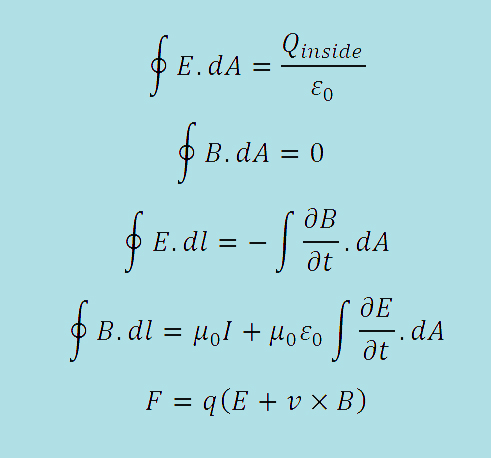Physics 311 - Electromagnetic Theory I
 Until the middle of the 19th century, electricity and magnetism were incorrectly thought
of as two distinct and separate physical phenomena. In 1820, Hans Christian Oersted
noticed that an electric current could deflect a nearby compass needle, implying a
relationship between moving electric charges and magnetic fields. Later, in 1831,
Michael Faraday discovered that a moving magnet generates an electric current in a wire,
thus strengthening the connection between electricity and magnetism. Finally, in the
early 1860s, James Clerk Maxwell supplied the missing piece to Ampere’s Law, thus
intimately connecting electricity and magnetism into one unified
electromagnetic theory.
Until the middle of the 19th century, electricity and magnetism were incorrectly thought
of as two distinct and separate physical phenomena. In 1820, Hans Christian Oersted
noticed that an electric current could deflect a nearby compass needle, implying a
relationship between moving electric charges and magnetic fields. Later, in 1831,
Michael Faraday discovered that a moving magnet generates an electric current in a wire,
thus strengthening the connection between electricity and magnetism. Finally, in the
early 1860s, James Clerk Maxwell supplied the missing piece to Ampere’s Law, thus
intimately connecting electricity and magnetism into one unified
electromagnetic theory.
These four equations, referred to as Maxwell’s equations, plus the Lorentz force law completely describe classical electromagnetic theory. In addition to yielding a unified description of electricity and magnetism, Maxwell’s equations make the remarkable prediction that light is an electromagnetic wave that moves at a finite speed, with a value precisely determined by two physical constants of the theory! Not only is electromagnetic theory regarded as a crowning achievement of 19th century physics, it also helped point Albert Einstein towards his discovery of the special theory of relativity. The significance of electromagnetic theory cannot be overstated!
| Set | Chapter | Problems | Due Date |
|---|---|---|---|
| 1 | 1 | Problems | Fri, Aug 25 |
| 2 | 1 | Problems | Wed, Aug 30 |
| 3 | 1 | Problems | Mon, Sep 4 |
| 4 | 1 | Problems | Fri, Sep 8 |
| 5 | 2 | Problems | Mon, Sep 18 |
| 6 | 2 | Problems | Mon, Sep 25 |
| 7 | 2 | Problems | Mon, Oct 2 |
| 8 | 2 | Problems | Mon, Oct 16 |
| 9 | 3 | Problems | Mon, Oct 23 |
| 10 | 5 | Problems | Wed, Nov 1 |
| 11 | 5 | Problems | Wed, Nov 8 |
| 12 | 5 | Problems | Wed, Nov 15 |
| 13 | 7 | Problems | Fri, Dec 1 |
| 14 | 7 | Problems | Fri, Dec 8 |